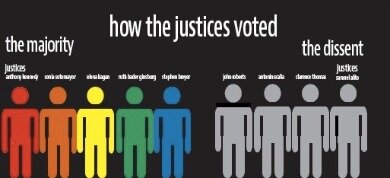Contents:


When the business pays interest, it must also amortize the bond premium at that time. Every time interest is paid, the company must credit cash for the interest amount paid to the bond holder. The company must debit the bond premium account by the amortization rate. The difference between the amount paid in interest and the premium’s amortization for the period is the interest expense for that period. Understanding how bond premiums and discounts will be calculated and recognized on the financial statements will be critical to your understanding of this topic. Think of bonds as financial securities that are separate from its respective premium or discount amount.
In addition, the bond is convertible into 15 shares of B corporation stock at the option of the holder. On the purchase date, B corporation’s nonconvertible, publicly-traded, three-year debt of comparable credit quality trades at a price that reflects a yield of 6.75 percent, compounded semiannually. On January 15, 1999, C purchases for $120,000 a tax-exempt obligation maturing on January 15, 2006, with a stated principal amount of $100,000, payable at maturity. The obligation provides for unconditional payments of interest of $9,000, payable on January 15 of each year. C uses the cash receipts and disbursements method of accounting, and C decides to use annual accrual periods ending on January 15 of each year. The constant yield method is used to determine the bond premium amortization for each accrual period.
Let’s modify our example so that the prevailing market rate is 10 percent and the bond’s sale proceeds are $961,500, which you debit to cash at issuance. If you issue a bond at other than its face, or par, value, you must amortize the difference between the issue price and par. A premium bond sells for more than par; discount bonds sell below par. Amortization is an accounting technique to adjust interest expenses over time for bond premiums and discounts. You can choose either the straight-line amortization — SLA — or the effective interest rate amortization method — EIRA.
The company typically chooses to issue the bond when it has exhausted most or all of its current sources of financing, but still needs additional funds in the short run. Since bonds are an attractive investment, the price was bidded up to $107,722, and the premium of $7,722 is considered a reduction of interest expense. The premium of $7,722 represents the present value of the $1,000 difference that the bondholders will receive in each of the next 10 interest periods. DebtBook also offers another acceptable form of the Effective Interest method that takes into account the callability of maturities.
Founded in 1993 by brothers Tom and David Gardner, The Motley Fool helps millions of people attain financial freedom through our website, podcasts, books, newspaper column, radio show, and premium investing services. This is because the full $100,000 is reported as a cash flow from financing. To wipe out (a debt, liability etc. ) gradually or in installments. Finance Strategists is a leading financial literacy non-profit organization priding itself on providing accurate and reliable financial information to millions of readers each year. Our team of reviewers are established professionals with decades of experience in areas of personal finance and hold many advanced degrees and certifications.
How Do I Calculate the Market Price of a Bond?
Full BioCierra Murry is an expert in banking, credit cards, investing, loans, mortgages, and real estate. She is a banking consultant, loan signing agent, and arbitrator with more than 15 years of experience in financial analysis, underwriting, loan documentation, loan review, banking compliance, and credit risk management.
After six months, you make the first interest payment of $45,000.The interest expense of $48,075 is 5 percent — the semi-annual interest rate — of the book value. You credit the bond discount by the difference of the $48,075 interest expense minus the $45,000 interest payment, or $3,075, reducing the discount to $35,425. After nine repetitions, the discount is zero and the book value is $1 million. At the time of issuance, the firm receives proceeds from issuing the bond. A bond payable is valued at the present value of its future cash flows .
Join PRO or PRO Plus and Get Lifetime Access to Our Premium Materials
As a result, the amounts in year 2026 required a small adjustment. Let us consider if 1000 bonds are issued for $ 22,916, having a face value of $20,000. Effective Interest Rate MethodEffective Interest Rate, also called Annual Equivalent Rate, is the actual rate of interest that a person pays or earns on a financial instrument by considering the compounding interest over a given period. Accretion of discount is the increase in the value of a discounted instrument as time passes and the maturity date looms closer. Yarilet Perez is an experienced multimedia journalist and fact-checker with a Master of Science in Journalism.
Taxation Rules for Bond Investors – Investopedia
Taxation Rules for Bond Investors.
Posted: Sat, 25 Mar 2017 19:37:12 GMT [source]
For non-callable bonds and discount bonds, the stated yield will always equal the Yield to Maturity. To record bonds issued at face value plus accrued interest.This entry records $5,000 received for the accrued interest as a debit to Cash and a credit to Bond Interest Payable. Companies do not always issue bonds on the date they start to bear interest. Regardless of when the bonds are physically issued, interest starts to accrue from the most recent interest date. Firms report bonds to be selling at a stated price “plus accrued interest.” The issuer must pay holders of the bonds a full six months’ interest at each interest date. Thus, investors purchasing bonds after the bonds begin to accrue interest must pay the seller for the unearned interest accrued since the preceding interest date.
Helpful Resources for Finance Teams Preparing to Implement GASB-96
The bonds are to be redeemed after a period of 10 years at face value. The coupon rate of bonds is 10%, and the market rate of interest stands at 8%. The bond premium of $4,100 must be amortized to Interest Expense over the life of the bond. This amortization will cause the bond’s book value to decrease from $104,100 on January 1, 2022 to $100,000 just prior to the bond maturing on December 31, 2026.
This example shows how to account for bonds issued at a premium. While the Effective Interest Rate method provided in DebtBook is the “correct” approach per the standard, we know in practice many issuers utilize the “Straight-Line” method when calculating their premium/discount amortization. On the CPA exam, bonds are similar to the Lion King as the effective interest method is can be thought of as the circle of life! The reality is that there are two major component of a bond that the FAR exam wants you to know about. To record bond interest payment.This entry records $1,000 interest expense on the $100,000 of bonds that were outstanding for one month. Valley collected $5,000 from the bondholders on May 31 as accrued interest and is now returning it to them.

Below, you’ll learn more about bond premium amortization and one method of calculating it known as the straight-line method. Prepare a debt amortization schedule for a bond issued at discount. Assume that the bond matures in 12 years with market interest rate at time of issue 10% annually and 5% semiannually.
Amortization of Bonds Premiums & Discounts:
For older bonds issued before Sept. 27, 1985, the straight-line method is still an option. At any point in time the liability on the balance sheet will equal the present value of the remaining cash flow payments to the creditor discounted at the effective market interest rate. The term bonds issued at a premium is a newly issued debt that is sold at a price above par.
To illustrate, consider the following balance sheet from Valenzuela Corporation prepared on 2 January 2020 immediately after the bonds were issued. In this case, however, the bonds are issued when the prevailing market interest rate for such investments is 10%. Suppose that on 2 January 2020, Valenzuela Corporation issued $100,000, 5-year, 12% term bonds.
But the bond premium has to be amortized for each period, and a reduction of cost basis in the bond is necessary each year. The IRS requires that the constant yield method be used to amortize a bond premium every year. The premium paid for a bond represents part of the cost basis of the bond, and so can be tax-deductible, at a rate spread out over the bond’s lifespan.
In the same transaction, you debit interest expense for $40,900 and credit interest payable or cash for $45,000. Based on the remaining payment schedule of the bond and A’s basis in the bond, A’s yield is 7.92 percent, compounded semiannually. Therefore, the bond premium allocable to the accrual period is $645.29 ($5,000−$4,354.71). Although the accrual period ends on August 1, 1999, the qualified stated interest of $5,000 is not taken into income until February 1, 2000, the date it is received. Likewise, the bond premium of $645.29 is not taken into account until February 1, 2000. The adjusted acquisition price of the bond on August 1, 1999, is $109,354.71 (the adjusted acquisition price at the beginning of the period ($110,000) less the bond premium allocable to the period ($645.29)).
In general, the holder’s basis in the bond is the holder’s basis for determining loss on the sale or exchange of the bond. This method relates the interest expense for the period to the bond’s book value. The amount of interest decreases with a decrease in the bond’s book value. Interest IncomeInterest Income is the amount of revenue generated by interest-yielding investments like certificates of deposit, savings accounts, or other investments & it is reported in the Company’s income statement.
- The Straight Method is preferable when the premium amount is very less or insignificant.
- In case of bonds held by an estate or trust, the election authorized under this subsection shall be exercisable with respect to such bonds only by the fiduciary.
- The effective interest rate method uses the market interest rate at the time that the bond was issued.
- The amortization amount is calculated by dividing the value of the amortization premium by its life.
The Premium must be amortized or written off by the company in its books of accounts over the bond’s life systematically. The amortization of bond premium refers to charging the Premium as a finance cost over the bond’s life. The primary advantage of premium bond amortization is that it is a tax deduction in the current tax year. In that case, the premium paid on the bond can be amortized, or in other words, a part of the premium can be utilized towards reducing the amount of taxable income. Also, it leads to reducing the cost basis of the taxable bond for premium amortized in each period.
It pays a 5% coupon rate semi-annually and has a yield to maturity of 3.5%. Let’s calculate the amortization for the first period and second period. The first step in calculating the premium amortization is to determine the yield to maturity , which is the discount rate that equates the present value of all remaining payments to be made on the bond to the basis in the bond.
What Are the Difference Between Annual Straight Line Amortization … – The Motley Fool
What Are the Difference Between Annual Straight Line Amortization ….
Posted: Sat, 04 Feb 2017 10:24:56 GMT [source]
Under this method, the amount of bond premium is equally amortized each year or accounting period. The amortization amount is calculated by dividing the value of the amortization premium by its life. Accordingly, an equal amount of bond premium is amortized each year. Typically companies make an amortization table for the amortization of bond premiums each year. The companies sometimes issue bonds at a price higher than their face value, and the difference between the issue price and the face value is known as the bond premium.
The Effect of Convertible Notes on a Balance Sheet
You should outstanding checks the entire amount from the transaction in one period. You can also ask your company’s counsel if they have any additional guidelines for this matter. As with all Accounting Procedures, there are always exceptions. At Finance Strategists, we partner with financial experts to ensure the accuracy of our financial content. In our ongoing effort to constantly improve the application based on client feedback, on April 5, 2023 DebtBook released a new Premium/Discount Amortization method of “Straight-Line by Maturity”. The amount of amortized Premium is a tax-deductible expense.
The Transition to Electric Vehicles and Renewables Will Test Global … – U.S. Global Investors
The Transition to Electric Vehicles and Renewables Will Test Global ….
Posted: Fri, 14 Apr 2023 20:01:05 GMT [source]
Based on the remaining payment schedule of the bond and A’s basis in the bond, A’s yield is 8.07 percent, compounded annually. Therefore, the bond premium allocable to the accrual period is $1,118.17 ($10,000−$8,881.83). On February 1, 1999, A purchases for $110,000 a taxable bond maturing on February 1, 2006, with a stated principal amount of $100,000, payable at maturity.
The bond’s maturity period is 10 years, and the face value is $20,000. The coupon rate of interest is 10% and has a market rate of interest at 8%. An unamortized bond discount is a difference between the par of a bond and the proceeds from the sale of the bond by the issuing company. For purposes of the preceding sentence, the term “taxable bond” means any bond the interest of which is not excludable from gross income. In the case of a bond , the amount of the amortizable bond premium for the taxable year shall be allowed as a deduction. For the years in which you own the bond for all 12 months, you simply take amortization of 12 times the monthly amount.
On January 1, 1998, PRS distributes to PR a taxable bond, issued by an unrelated corporation, in liquidation of PR’s partnership interest. At that time, the fair market value of PR’s partnership interest is $40,000 and the basis is $100,000. Once the bond premium is calculated, you need to decide how the bond premium shall be amortized. There are two methods for the same, which are discussed below. Based on your chosen method, you can amortize the bond premium in the books of accounts.
- You collect a premium when you issue bonds bearing an interest rate higher than prevailing rates.
- The bondholders are reimbursed for this accrued interest when they receive their first six months’ interest check.
- You plug the $41,000 difference by crediting the adjunct liability account “premium on bonds payable.” SLA reduces the premium amount equally over the life of the bond.
- “ with reference to the amount payable on maturity , in the case of any bond described in subsection which is acquired after December 31, 1957, and”.
The initial book value is equal to the bond premium balance of $41,000 plus the bond’s payable amount of $1 million. After six months, you make the first interest payment of $45,000.The semi-annual interest expense is 4 percent of $1.041 million, or $41,640. You debit the bond premium by the $45,000 interest payment minus the $41,640 interest expense, or $3,360, reducing the premium to $37,640. Repeat the cycle nine more times — the book value ends at $1 million and the premium is gone. You collect a premium when you issue bonds bearing an interest rate higher than prevailing rates. For example, suppose your company issues a $1 million par value bond for $1.041 million that matures in 5 years.